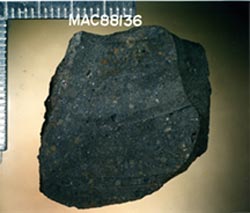Study does not discount the suspected contributions of ’greenhouse gases’ in elevating surface temperatures
At least 10 to 30 percent of global warming measured during the past two decades may be due to increased solar output rather than factors such as increased heat-absorbing carbon dioxide gas released by various human activities, two Duke University physicists report.
The physicists said that their findings indicate that climate models of global warming need to be co
Remains of photosynthesizing microbes in prehistoric rocks suggest Earth was not ice-bound
A study that applied innovative techniques to previously unexamined rock formations has turned up strong evidence on the “Slushball Earth” side of a decades-long scientific argument.
The study appears in the Sept. 29 Science Express. The lead author is Alison Olcott, a Ph.D. student of earth sciences in the USC College of Letters, Arts and Sciences.
Geologists agree
Researchers from NASA, the National Snow and Ice Data Center and others using satellite data have detected a significant loss in Arctic sea ice this year.
On Sept. 21, 2005, sea ice extent dropped to 2.05 million sq. miles, the lowest extent yet recorded in the satellite record. Incorporating the 2005 minimum using satellite data going back to 1978, with a projection for ice growth in the last few days of this September, brings the estimated decline in Arctic sea ice to 8.5 percent
Seasonal wedges of undersea water block upwelling of plant sustaining nitrates
Duke University oceanographers have developed an explanation for why a vast North Atlantic circulation zone can have a large variability in nutrient supplies needed to sustain ocean plants and, by extension, support the food web of marine life.
The circulating zone in the North Atlantic Ocean, known as a “subtropical gyre,” swirls in a clockwise direction between the Gulf Stream — the warm

Important clues to the environment in which the early Earth formed may be emerging from Purdue University scientists’ recent study of a particular class of meteorites.
By examining the chemistry of 29 chunks of rock that formed billions of years ago, probably in close proximity to our planet, two Purdue researchers, Michael E. Lipschutz and Ming-Sheng Wang, have clarified our understanding of the conditions present in the vicinity of the ancient Earth’s orbit. Because
Extraordinary creatures who inhabit extreme underwater conditions are being investigated by University scientists in a three-year project. These deep-sea communities could reveal an evolutionary history different to anything else on earth and even give us clues to how life could exist on other planets.
The creatures live around hydrothermal vents – incredibly hot environments in the deep sea – and are unique because they depend on bacteria living inside them for their own survi